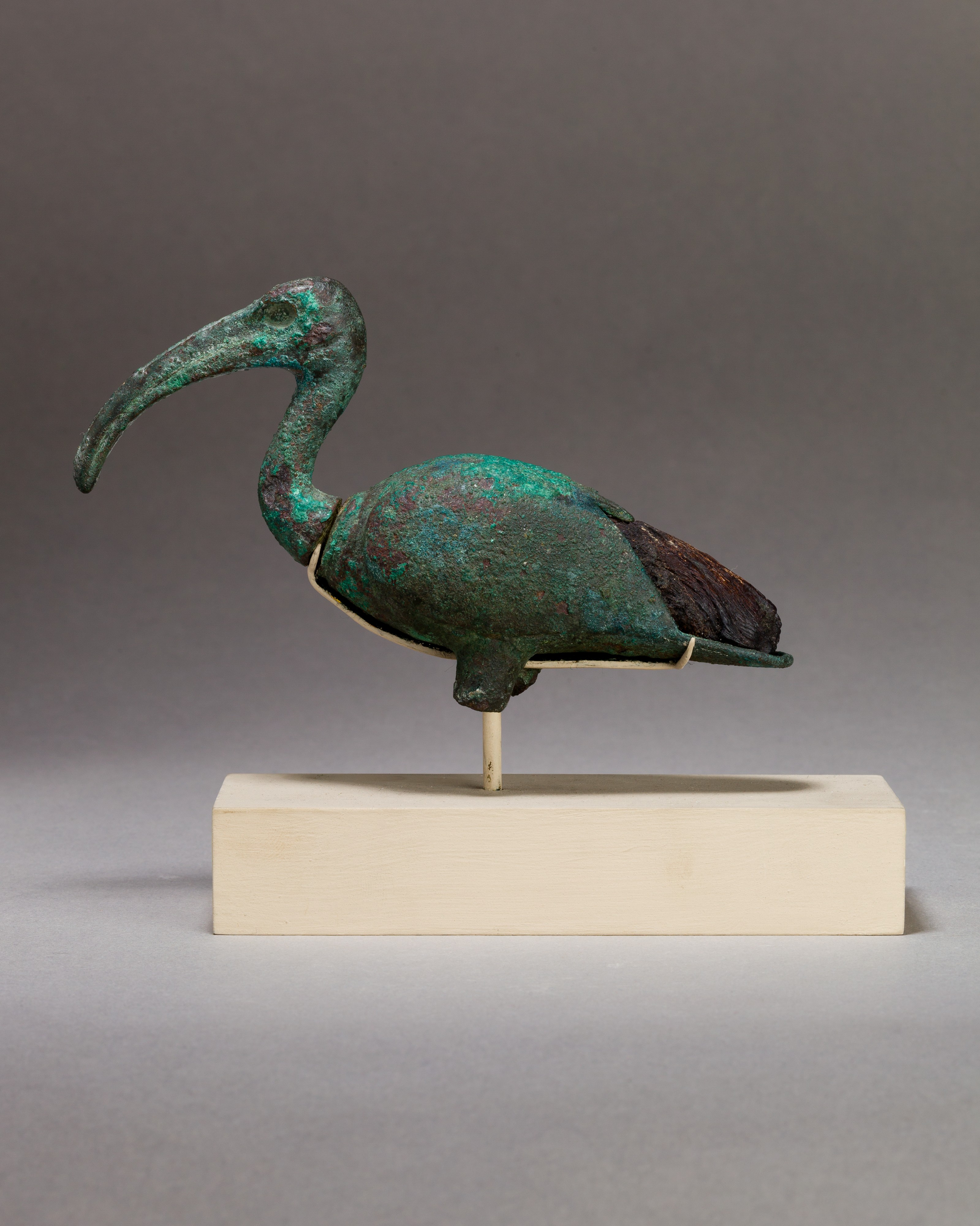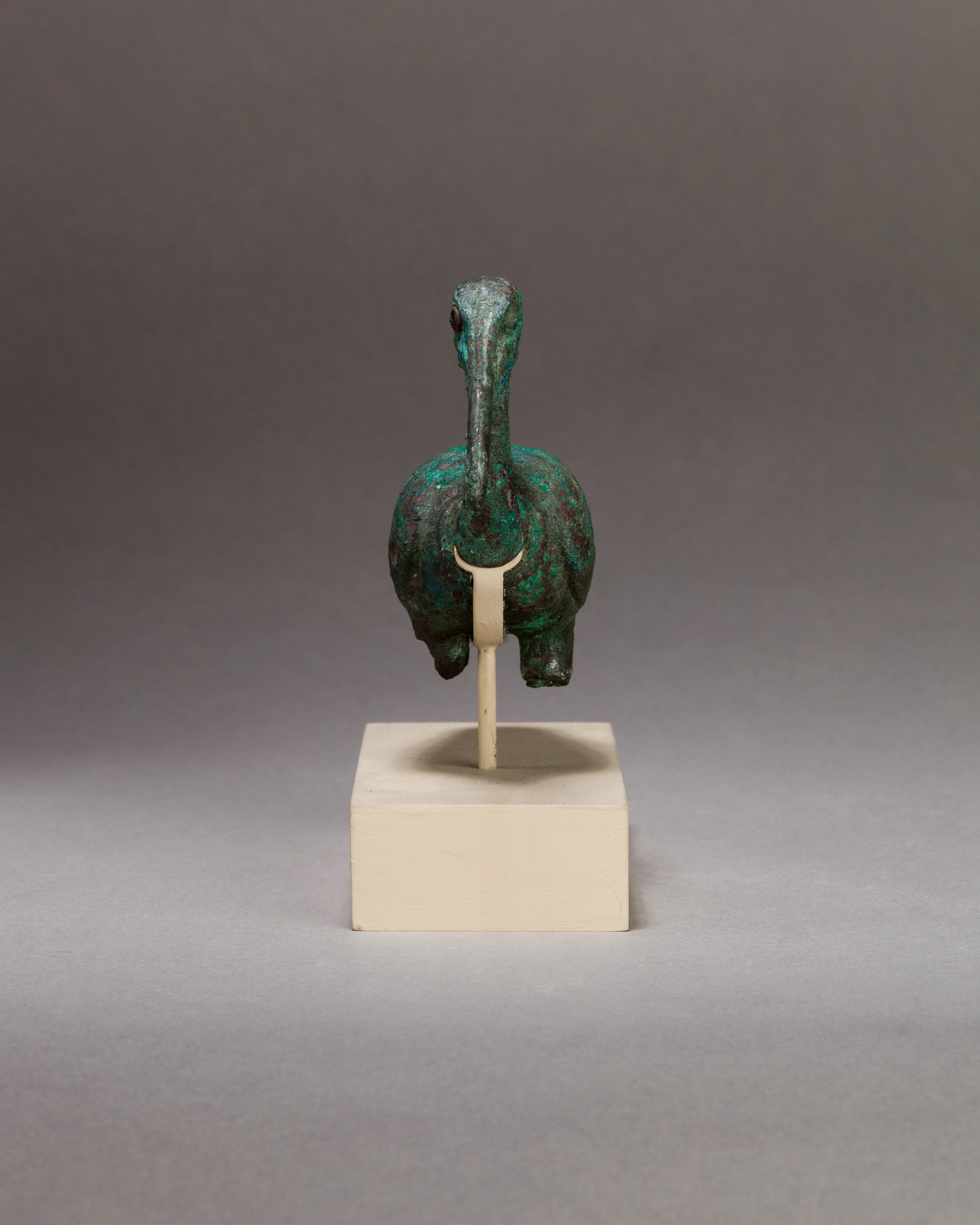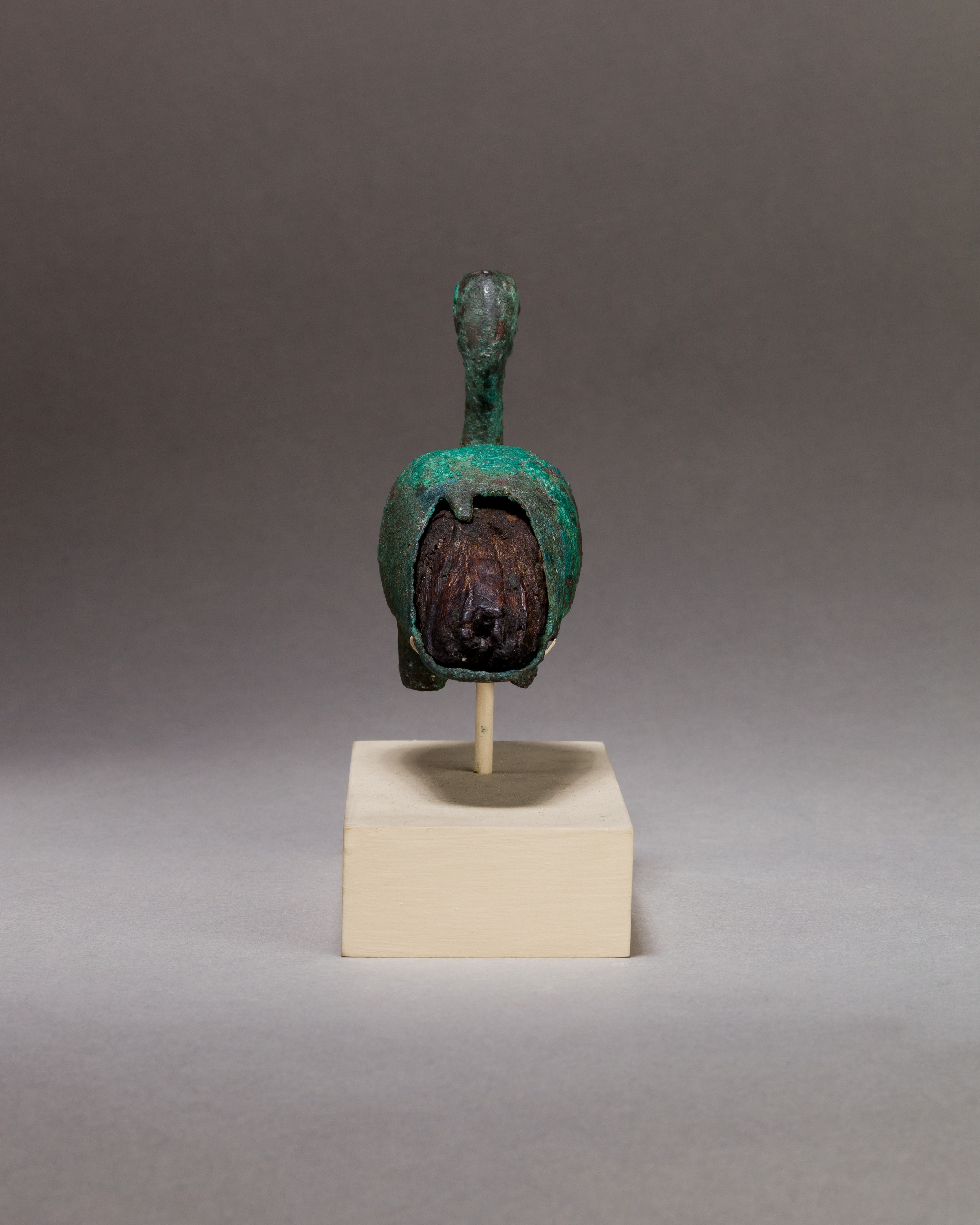Ibis
Late Period–Ptolemaic Period
Not on view
The ibis was sacred to Thoth, the god of wisdom, scribal functions, and learning. Representations of the ibis in copper alloy are some of the most numerous sacred animal statuettes, alongside the cat, falcon, and Apis bull. The prevalence of the ibis during the first millennium BC, and the appeal of animal cult in general, can also be seen in the thousands of surviving ibis mummies, which were offered in animal necropoleis (catacombs) throughout Egypt.
This ibis is composed of multiple parts, including different materials. The head was separately crafted and is mechanically attached to the body. The legs, which were in a striding position (now lost), were also separately crafted. The tail feathers are made of wood, which would have contrasted nicely with the original shining cupreous metal patina. The technique of combining materials is well known for Egyptian statuary, and among cult dedications, was commonly used for ibis representations in particular. Ibis statuettes such as this have been found in the catacombs with ibis mummies and also in caches related to temples or shrines.
Due to rights restrictions, this image cannot be enlarged, viewed at full screen, or downloaded.
This artwork is meant to be viewed from right to left. Scroll left to view more.





